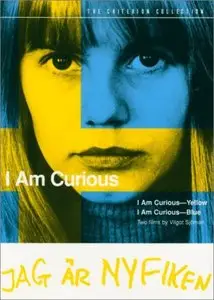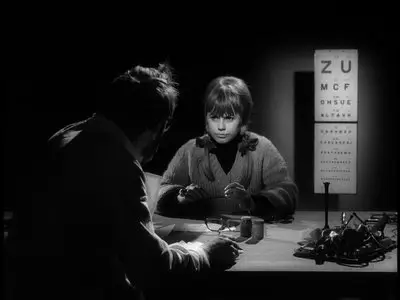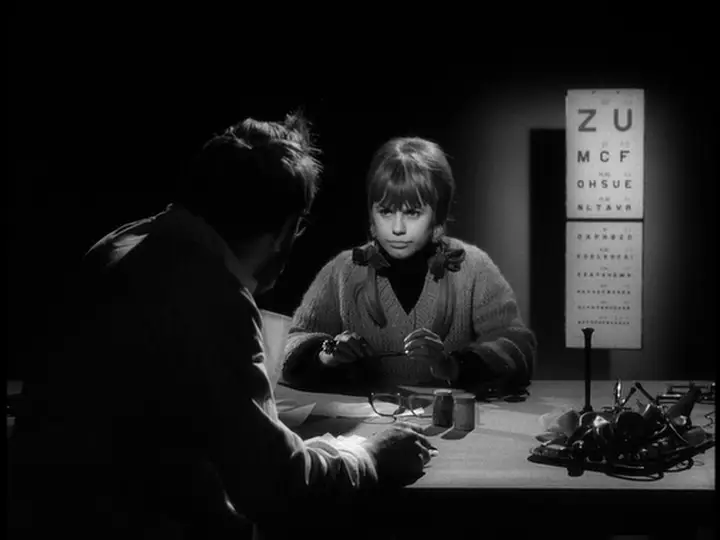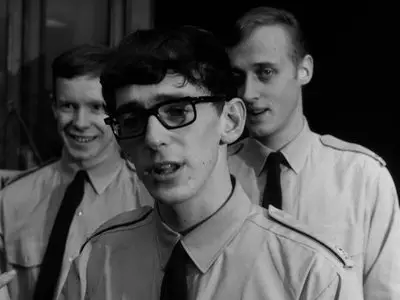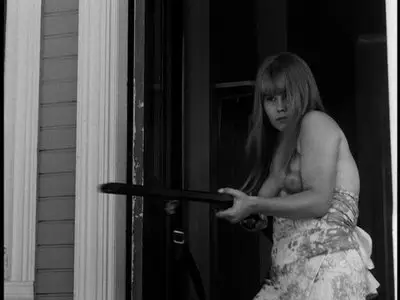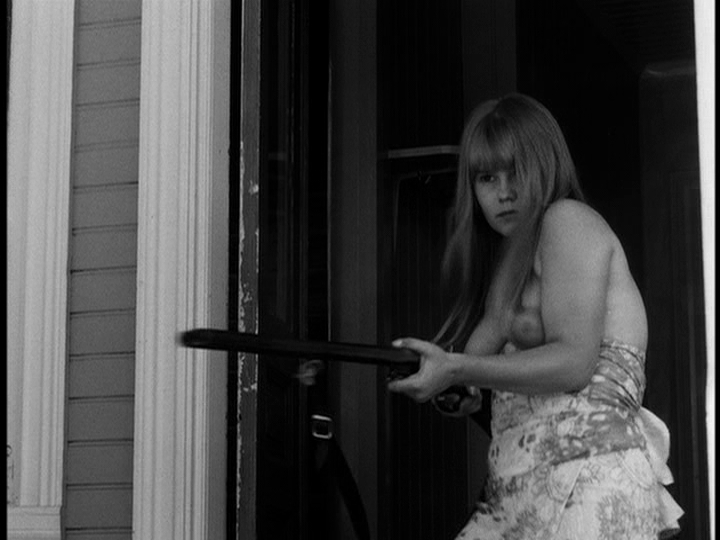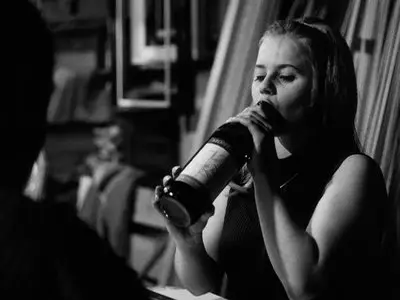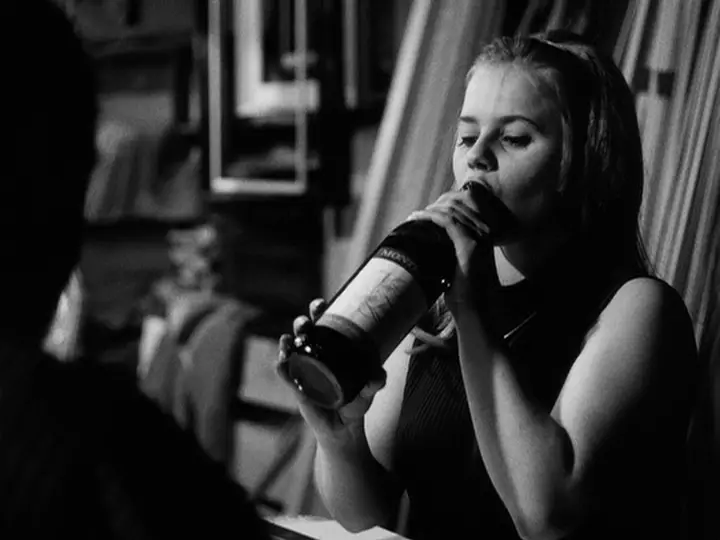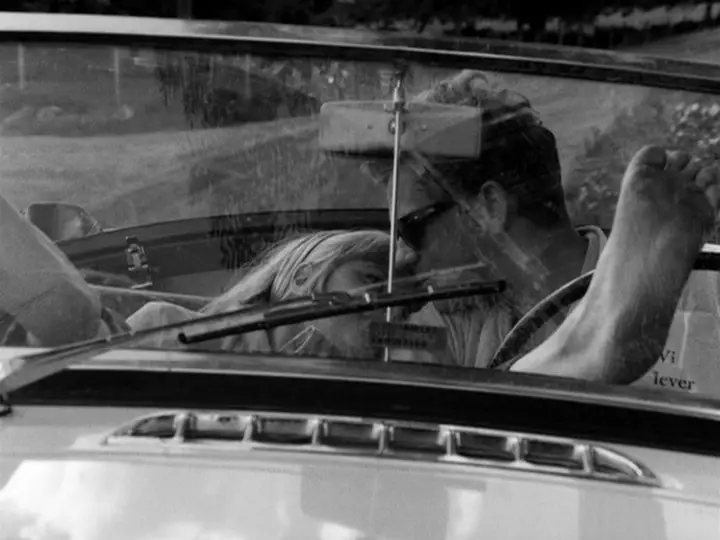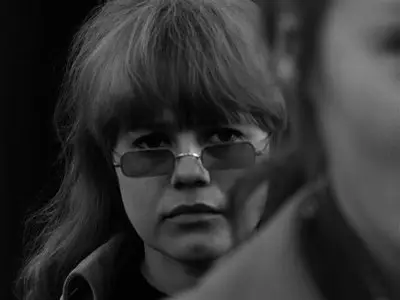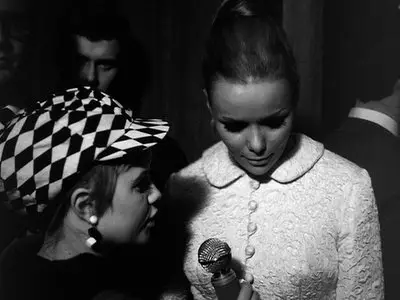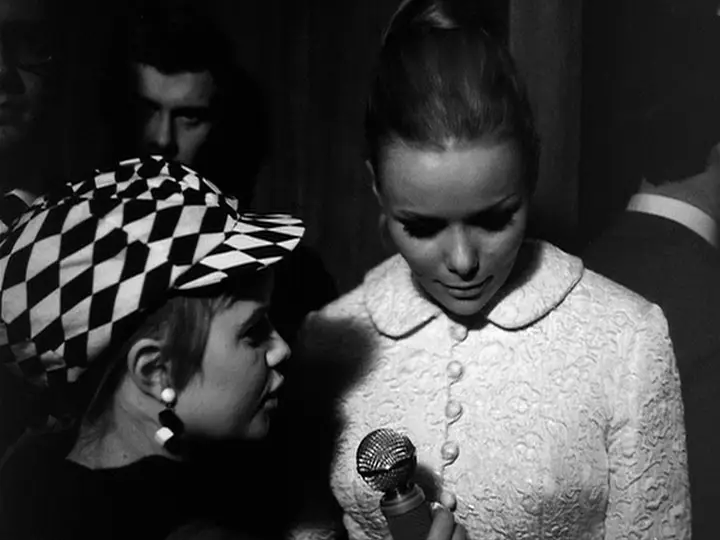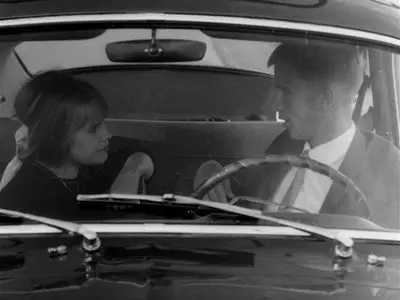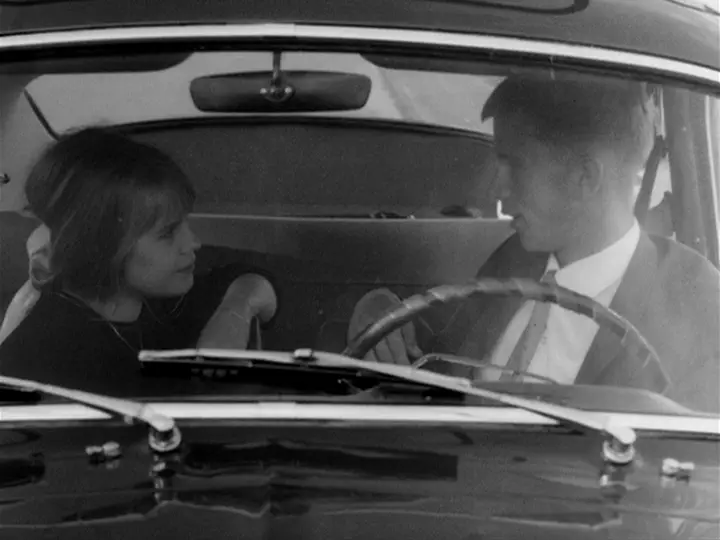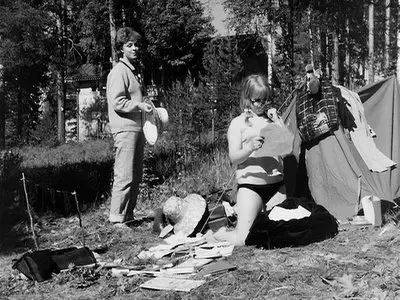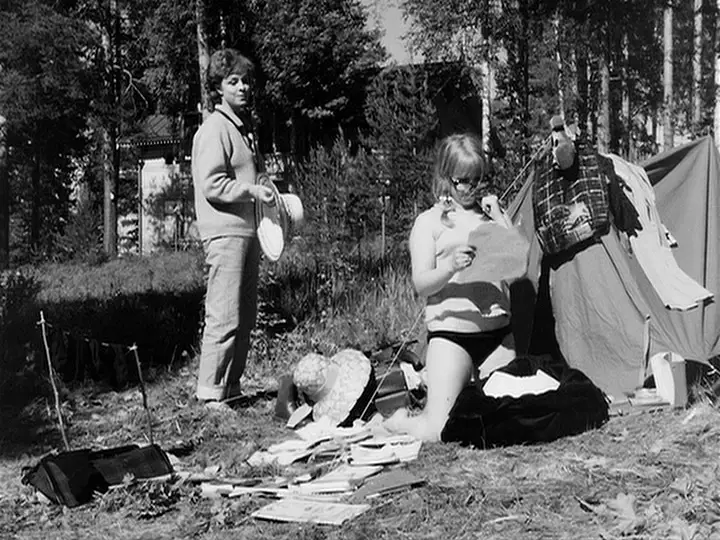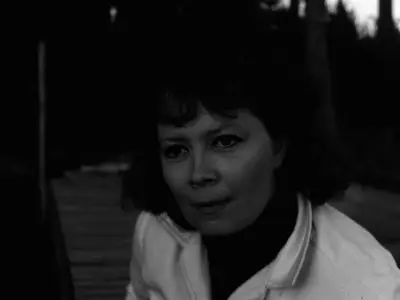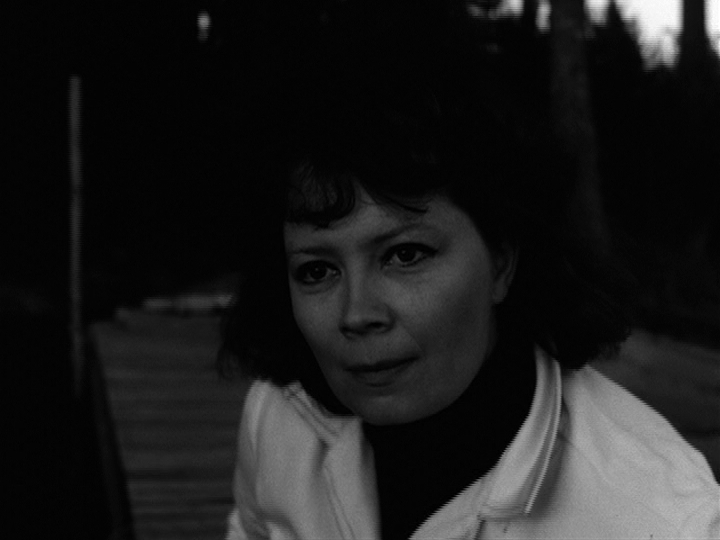I Am Curious…
I Am Curious - Yellow (1967) / I Am Curious - Blue (1968)
2xDVD9 | VIDEO_TS | NTSC 4:3 | 02:02:03 + 01:47:32 | 7,45 Gb + 7,31 Gb
Audio: Svenska AC3 1.0 @ 128 Kbps | Subtitles: English | Covers + Booklets
Genre: Art-house, Drama | The Criterion Collection #179, #180, #181
I Am Curious - Yellow (1967) / I Am Curious - Blue (1968)
2xDVD9 | VIDEO_TS | NTSC 4:3 | 02:02:03 + 01:47:32 | 7,45 Gb + 7,31 Gb
Audio: Svenska AC3 1.0 @ 128 Kbps | Subtitles: English | Covers + Booklets
Genre: Art-house, Drama | The Criterion Collection #179, #180, #181
Director: Vilgot Sjöman
Seized by customs upon entry to the United States, subject of a heated court battle, banned in cities across the United States, Vilgot Sjöman’s I Am Curious - Yellow is one of the most controversial films of all time. This landmark document of Swedish society during the sexual revolution has been declared both obscene and revolutionary. It tells the story of Lena (Lena Nyman), a searching and rebellious young woman, and her personal quest to understand the social and political conditions in 1960s Sweden, as well as her bold exploration of her own sexual identity. Shattering taboos as it freely traverses the lines between fact and fiction, I Am Curious - Yellow is presented here for the first time with its companion piece I Am Curious - Blue, a parallel film featuring the same characters and in which the lines between documentary and fiction are even further blurred.
I Am Curious… Box set (The Criterion Collection #179)
I Am Curious - Yellow (The Criterion Collection #180) - IMDB | Wikipedia
I Am Curious - Blue (The Criterion Collection #181) - IMDB | Wikipedia
I Am Curious – Yellow would mostly likely be a forgotten movie – left somewhere in the multitudinous ranks of 1960s experimental avant-garde films that mix sex and politics – if the U.S. Customs Office hadn’t seized the first copy being imported by its distributor, Grove Press, into the United States in 1968.
In its misguided attempt to protect decent American citizens from Swedish obscenity, the government touched off a firestorm that caused I Am Curious – Yellow to become one the final straws that helped pull American cinema out from under years of prior restraint by the Production Code, the film industry’s long-since-outdated form of self-imposed censorship that had dictated the content of American films since the mid-1930s. Several court cases later, I Am Curious – Yellow was allowed to play in U.S. theaters, and, despite picketing and mixed reviews, it did $20 million worth of business from moviegoers dying to see on the silver screen what their counterparts in Europe had been seeing for years: bare skin and simulated copulation, all in the name of art.
I’m sure that back in the late ’60s when moviegoers flocked to the few theaters that were brave enough to show such a film, their minds were running away with dirty notions of what they might see. And some of them may have been duly shocked at what they saw… 40 minutes into the film.
Despite its raunchy reputation as the film that paved the way for everything from Last Tango in Paris (1972) to Showgirls (1995), I Am Curious – Yellow is a surprisingly dull affair. In fact, it often borders on trite silliness when it isn’t being overbearingly pretentious. It's more political than sexual, and the majority of the film is given over to endless ranting, meandering storylines, and journalistic-style interviews about the political climate in Sweden in the late ’60s. It is clear from the final product that there was no finished script in use while the film was shot, which gives it a sense of immediacy, but also one of sometimes tortured obliqueness.
The 22-year-old heroine of the story is Lena (Lena Nyman), an aspiring sociologist who is trying to get herself situated in a constantly changing world. She is insatiably curious about everything (although her leftist political outlook is already firmly entrenched), and she collects information in huge boxes organized alphabetically. The first 40 minutes of the film deal primarily with her interviewing people on the streets about their opinions on whether or not Sweden has a class structure, if women have the same job opportunities as men, and so on and so forth. It’s vaguely interesting for the first 10 minutes, but one can only watch so many man-on-the-street interviews involving the same questions before its gets tiresome.
However, that repetition makes the film’s politics stick with you, even more than the sexual imagery. A scene showing a man trying to explain why a doctor should make more money than a dishwasher, a group of Swedish youth in the streets protesting U.S. involvement in Vietnam, footage of Dr. Martin Luther King explaining the tenets of nonviolence—in the end, these are the things we remember from the film. Unfortunately, though, they’re fractured moments that don’t always cohere with the film’s other material. It’s too shapeless and loose, and it’s easy for one’s attention to drift until the screen is once again filled with the infamous sexual interludes, which strike your attention not because of their heated eroticism (only a true bluenose could describe the sex here as arousing), but because of their honesty. The sex scenes in I Am Curious – Yellow are awkward, sometimes funny, but always genuine in a clumsy, pants-around-your-ankles kind of way.
The director, Vilgot Sjöman, started off in Swedish theater and moved on to cinema in the early 1960s. He directed I Am Curious – Yellow as a sort of cinema-verite mock documentary, casting himself as the director of the movie-within-a-movie and having all the actors use their real names. Although he began with modest intentions, he ended up shooting massive amounts of footage, the excess of which he edited into a second film that was released a year later as I Am Curious—Blue (yellow and blue being the colors of the Swedish flag).
I Am Curious – Blue is an entirely separate film from Yellow. Although it tells roughly the same kind of story with the same characters, it shifts its political emphases (for instance, while the Swedish monarchy is one of the prime targets for ridicule in Yellow, Blue focuses on the state church). Blue is also more self-referential, particularly in a sequence that depicts some deeply disturbing “fan letters” that accuse Lena Nyman of being a “whore” for her performance in Yellow. I Am Curious – Blue is not nearly as well known, though, because by the time it reached U.S. shores, the battle for I Am Curious – Yellow was over and the industry had been changed forever. By 1969, the X-rated Midnight Cowboy was being awarded Best Picture at the Oscars and hard-core porn was beginning to gain the mainstream acceptance that would lead to the film’s industry’s brief flirtation with “porno chic” in the early ’70s.
In both films, Sjöman used black and white photography with mostly handheld cameras, and the rough editing and sound is most likely done on purpose to give it a more immediate, documentary quality. But, that doesn’t stop the style from being distracting because there seems to be little reason why this particular story should be shot as a documentary. Oftentimes the action will stop in the middle of scene, and Sjöman will walk on-camera and begin coaching the actors about their lines. It’s a brash attempt at violating the diegesis, but it accomplishes little other than declaring the film’s artsy self-consciousness.
While I Am Curious – Yellow and its counterpart I Am Curious – Blue certainly represent an important moment in world cinema, both films have mellowed with age and are now merely curiosity pieces, rather than controversial explorations of politics and sex. I have no doubt that the MPAA would slap both films with an NC-17 rating if they were ever re-released into U.S. theaters (there’s far too much male frontal nudity), but despite their intrinsically biting nature, both films still feels droll and creaky when seen today.
Special Features:
I Am Curious - Yellow:
- New high-definition digital transfer
- 2003 video introduction by director Vilgot Sjöman (5:21)
- Director’s diary: Vilgot Sjöman’s commentary on selected scenes from the film
- "Rosset/deGrazia: A Conversation" 2003 interview with publisher Barney Rosset and attorney Edward de Grazia (11:57)
- "The Battle for I Am Curious - Yellow" 2003 video essay by Peter Cowie (8:51)
- Excerpts from the transcripts of the trial for I Am Curious – Yellow
- Theatrical trailer (with introduction by by Vilgot Sjöman) (2:04)
- Essay by critic Gary Giddins
- New and improved English subtitle translation
- Cover, Booklet
I Am Curious - Blue:
- New high-definition digital transfer
- "Director's Diary" selected scene audio commentary by Vilgot Sjöman (2002)
- Excerpts from Sjöman’s Self Portrait 92, a documentary made for Swedish television (18:20)
- Deleted Scenes with introduction by Vilgot Sjöman (5:02)
- Reprinted 1968 interview with Sjöman
- New and improved English subtitle translation
- Cover, Booklet
All Credits goes to Original uploader.


